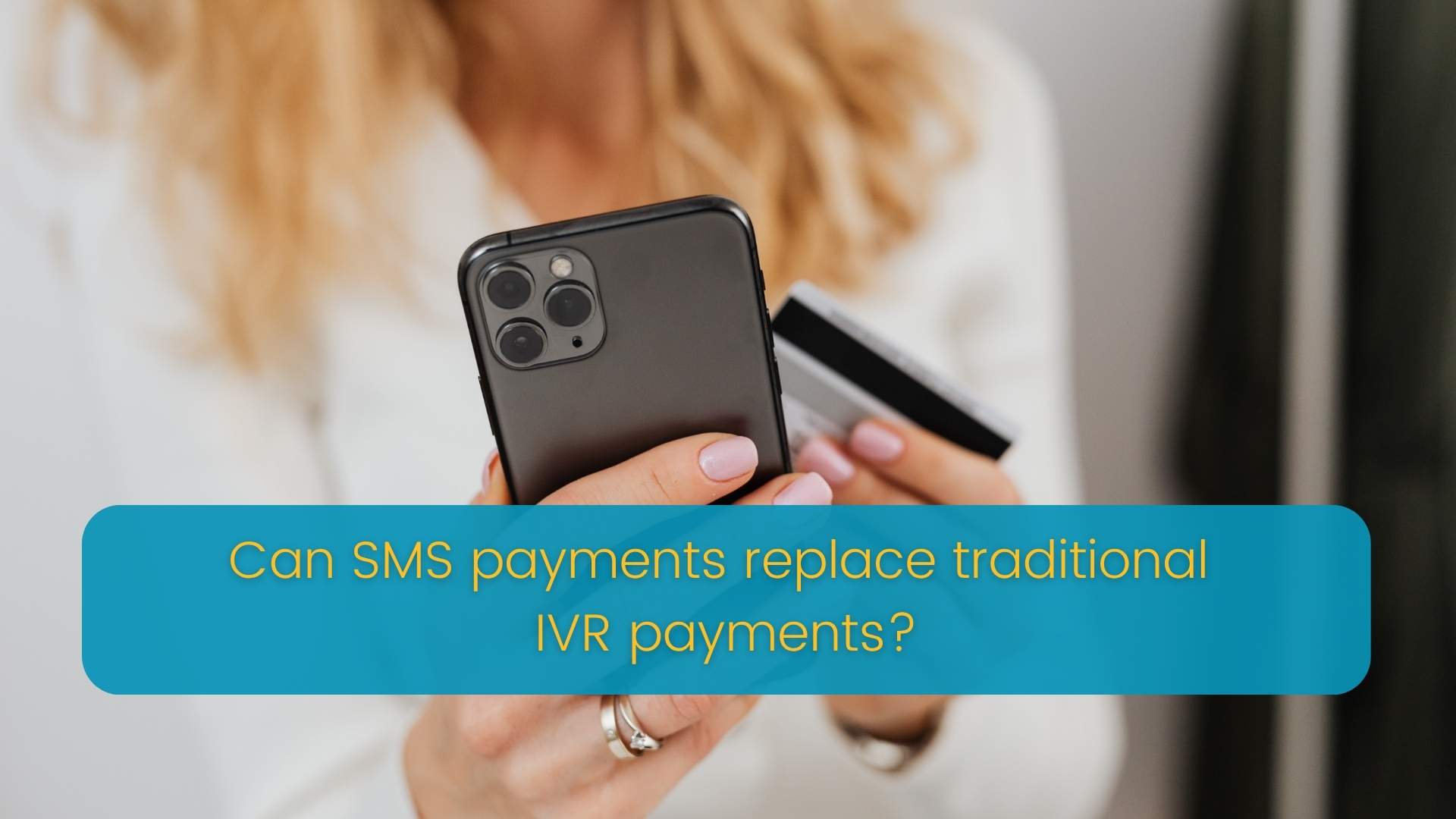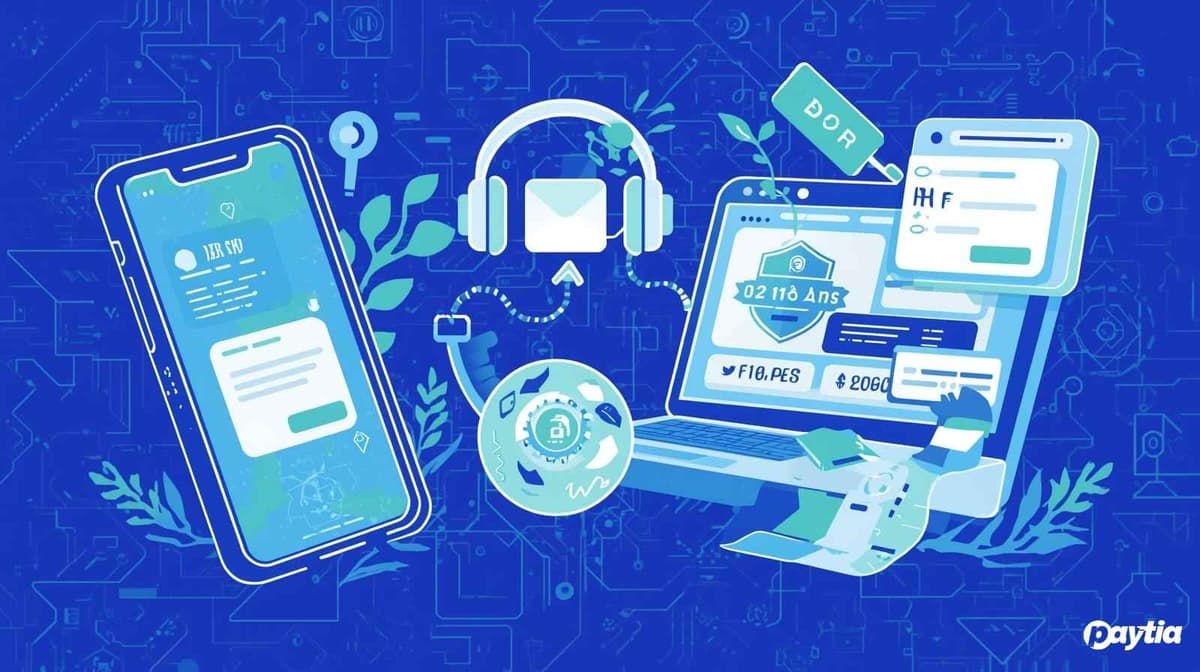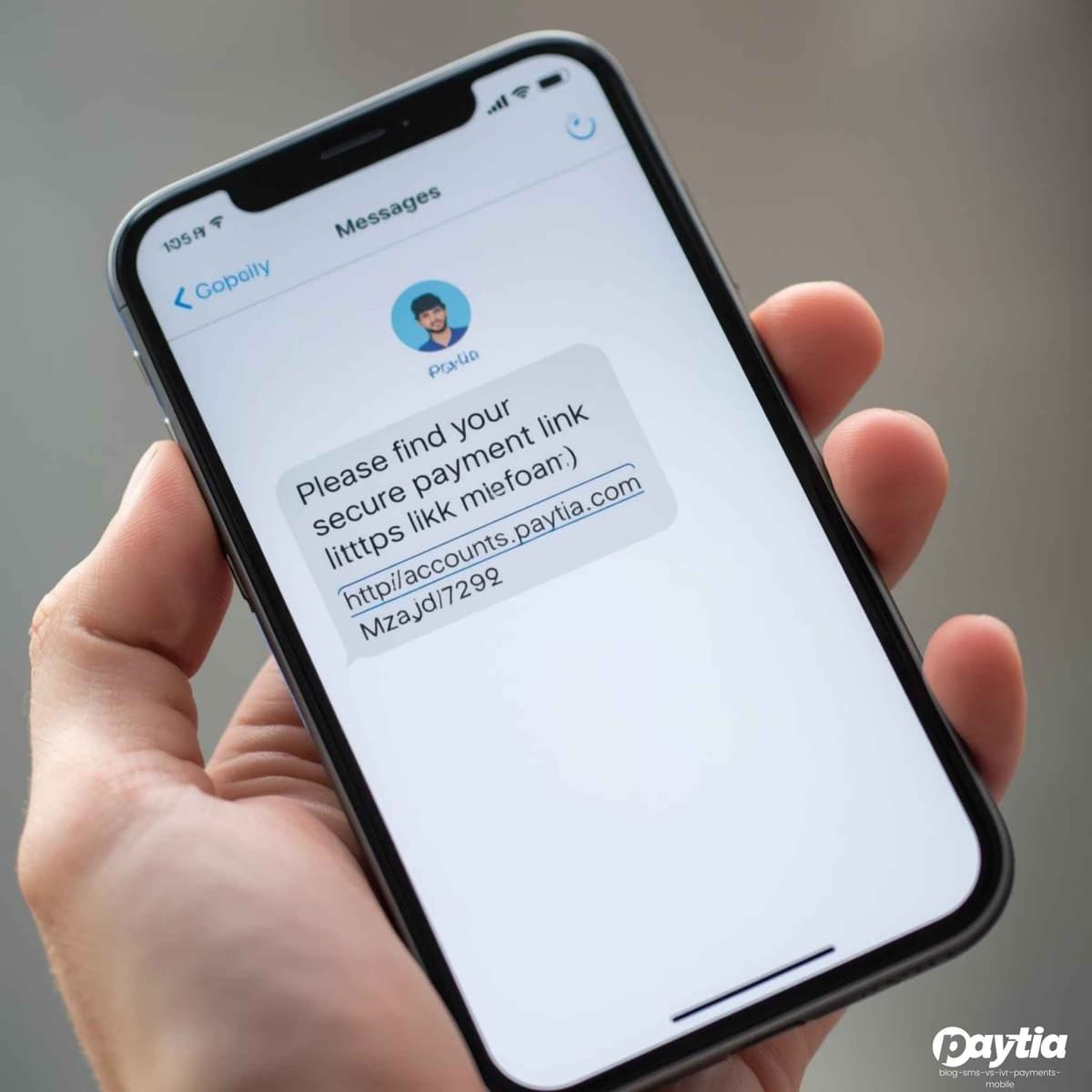
Can SMS Payments Replace Traditional IVR Payments?
SMS payments have evolved significantly since their introduction. Originally simple text-based transactions, the technology now incorporates advanced solutions like USSD, QR codes, and NFC.
Simplicity drives SMS transaction growth. These SMS payments complete in seconds, compared to alternative solutions like IVR.
SMS-based payment systems address a major concern in mobile money transactions: data security. You need a reputable provider that guarantees secure payment services.
Many people cite SMS payments for accessibility. Mobile phone payments work on pretty much any mobile phone. No need to buy an expensive smartphone or install suspicious software.
But despite these perks, can SMS payments replace IVR?
Read below as we explore that question.

What Are SMS Payments?
SMS payment is essentially what it implies – financial transactions completed via short message service.
SMS-based payments have garnered significant attention over the years, thanks to convenience and accessibility. The technology is a step up from traditional pay by bank methods, which typically require a trip to a banking hall or ATM.
Many find SMS transactions swifter and more secure than other virtual payment solutions.
But SMS payment security concerns led Paytia to develop Secure Code verification, which rebuilds customer trust in payment links.
How Do SMS Payments Work?
The SMS payment process is straightforward.
First, a business sends an SMS message to its clients.
The text message may or may not contain an active link. But for security, forward-thinking businesses integrate clickable links into their SMS payment prompts.
With Paytia's Secure Code, customers receive a 4-digit verification code separately from the payment link, confirming the link's legitimacy before they click.
Clicking on the URL directs a client to a mobile-friendly checkout page. The customer completes the process by entering their payment credentials.
SMS transactions are instant. Once a client inputs their payment information and authorizes the process, their mobile wallets are charged almost immediately.
Purchase costs are factored into a customer's monthly mobile phone bills or deducted from their prepaid balance.
Unpacking the History of SMS Payments
Mobile payments have evolved significantly since their introduction in the late 1990s. Early implementations focused on simple text-based transactions for vending machines and basic services.
Vodafone's groundbreaking launch of M-Pesa in Kenya revolutionized the mobile money landscape. M-Pesa set the stage for disruptive mobile money innovations over the years. The technology registered massive growth, serving as a more accessible alternative to traditional banks.
Tech giants Google and Apple entered the mobile payment scene with NFC-based digital wallets and payment apps, expanding the mobile payment ecosystem.
What Are IVR Payments?
Interactive Voice Response (IVR) payments are payment methods made over a phone call, using an automated and self-service phone system.
Unlike SMS transactions that rely on text messages and links, an IVR payment requires a customer to input their payment information through touchtones. The transactions can be completed without necessarily speaking to a live agent.
IVR payments are available 24/7. But while the system is inherently self-service, agent intervention may be necessary from time to time.
How Do IVR Payments Work?
Like SMS payments, IVRs require three principal parties.
First, there must be a business requesting payments.
Next is the client authorizing the transactions.
And more importantly, you need a reputable IVR payment gateway. These are mobile money services that offer IVR, usually in addition to other payment solutions like SMS and video-based payments.

The IVR payment process begins with a customer initiating a call through a dedicated phone number.
An automated voice system helps validate the customer's credentials. For instance, they may be required to input their account numbers or a unique reference number using their mobile device's keypad. This is a security measure to prevent unauthorized account access.
The input details undergo automated verification.
At this point, the voice prompt may also need to confirm a customer's account number and account balance.
Not only is this an extra safety precaution. It also notifies the client whether they have sufficient funds to proceed with the initiated transaction.
Next, a customer enters their payment information using their phone's keyboard. Credit or debit card numbers, card expiration date, and the CVV are mandatory to go ahead with the transaction.
If everything checks out, the IVR system processes the payment. The customer receives a verbal confirmation (usually also with a reference number) of the transaction's details.
Can SMS Payments Replace IVR?
To settle this question, we must understand the features that define SMS-based payment transactions.
1. Increased Transaction Speed
Making payments should be swift and efficient, not just for customers but also for businesses.
Most clients love the fact that SMS payments are incredibly fast. As there are fewer steps to navigate, you can complete each payment within seconds.
In contrast, IVR payments take longer since a customer must remain on a phone call and often follow a litany of long-winding prompts.
SMS-based transactions can turn out to be even faster if your business has embraced automation. Using services like Paytia can assist with payment processing, eliminating the traditional hands-on approach to payment collection.
Paytia provides advanced solutions for secure and efficient SMS and IVR payment transactions, working alongside your existing payment infrastructure.
Paytia's Secure Code adds an extra layer of trust without slowing down the process. Customers see the code immediately and can verify authenticity instantly.

2. Greater Convenience
SMS and IVR payments are essentially mobile-based.
That means you can complete either using standard mobile phones, without necessarily splurging on expensive smartphones.
Both SMS and IVR transactions can be completed without downloading and installing special applications.
However, SMS payments provide greater convenience since clients don't need to initiate phone calls. The absence of a call also reduces the number of menu icons to navigate.
3. Addressing SMS Security Concerns with Secure Code
Security is critical for mobile payments. Both SMS and IVR have their own security considerations.
SMS payment links offer convenience, but they also face security challenges. Smishing (SMS phishing) attacks trick customers into clicking malicious links. SMS messages aren't end-to-end encrypted, making them vulnerable to interception. SMS spoofing allows attackers to impersonate trusted businesses.
These security flaws have eroded customer trust in payment links sent via SMS. Customers are rightfully cautious about clicking links in text messages, especially when they're unexpected.
This is why Paytia introduced Secure Code – a verification system that rebuilds trust in SMS payment links. When you send a payment link via SMS using Paytia's Advanced Payment Links, customers receive a unique 4-digit security code separately from the payment link. This code appears on the secure payment page, proving the link is legitimate and reducing the risk of phishing attempts.
Secure Code addresses the core SMS security problem: customers can't verify if a payment link is genuine. With Secure Code, they see the verification code before clicking, confirming the link came from your business. This aligns with guidance from the UK National Cyber Security Centre (NCSC) on preventing phishing attacks.
IVR payments also have security considerations. During phone calls, customers may inadvertently speak their credit card information aloud, which could be overheard. Modern IVR systems use DTMF masking and PCI-DSS compliance to protect sensitive data.
The key difference: SMS payment links with Secure Code verification direct customers to secure web pages where they enter payment details, keeping sensitive information off the phone call itself. IVR requires customers to enter payment details using their phone keypad during the call.
For businesses concerned about SMS security, Paytia's Secure Code provides the trust verification customers need. Combined with HTTPS encryption and PCI-DSS compliance, it makes SMS payment links a secure alternative to IVR.
4. Incredible Simplicity
IVR phone calls typically need callers to validate their credentials. They may be required to confirm details like their account balances, or even more sensitive information like their usernames and passwords.
While these stringent measures are well-intentioned, they can prolong the IVR payment process even further.
Some customers may not readily recall their usernames. Others may not confirm their account balances to the cent, having them temporarily blocked from going ahead with the payment.
SMS transactions lack these inconveniences. Simply click on a secure link, validate your credentials through two-factor authentication, and you're good to go.
5. Improved Accuracy
Clerical errors can ruin a mobile payment.
Sometimes, it only takes missing a single digit for a transaction to go south.
Since SMS payments don't require active interactions with a voice prompt, clerical risks are incredibly low.
SMS transactions provide a less anxious way to complete mobile payments. Clients only need to validate the authenticity of the payment links before clicking on them.
6. Cost Savings
SMS payments are more cost-effective from a business's perspective.
While IVR systems are largely self-service, their efficiency may often require a hybrid approach. That means a company might need to hire a sizable customer care workforce to address technical payment-related issues.
The number of call handling staffers can be astronomical, especially for businesses handling large payment volumes daily.
Switching to SMS payments reduces staffing expenses associated with IVR systems. By working with a reputable mobile payment service provider, you can process SMS payments without initiating direct contact with your clients each time.

Situations Where IVR May Be Ideal
While SMS payments provide certain legitimate benefits, IVRs may be ideal in certain scenarios.
Consider IVR payments if you're waging a marketing campaign. Using IVR systems, you can gauge your clients' response rate more effectively than SMS payments.
You should also consider IVR payments if dealing with overly cautious clients who want some semblance of a human touch before completing their transactions. Although the IVR process takes considerably long, it enhances customer trust as they believe a genuine operator is probably listening in.
IVRs provide a more interactive way to engage with your clients.
IVRs would also be excellent when handling complex transactions. It provides a more transparent way to validate a customer's authenticity, particularly before initiating large or suspicious transactions.
SMS Versus IVR Payments: Should You Upgrade?
SMS payments are considerably safer when facilitated through secure links with verification systems like Paytia's Secure Code. This payment method also provides customers with greater convenience and discretion by letting them complete transactions without being on a phone call.
Accessibility, speed, and accuracy are other legitimate reasons to upgrade to SMS-based payment solutions.
But despite those standout benefits, there are unique circumstances where IVR payment processing may be ideal for your business.
IVR payments are notably valuable where customers favor voice over text-based interactions. They also boast a higher response rate and a more reliable way to gather useful customer behavior data.
Can SMS Payments Replace IVR? The Answer
The short answer: SMS payments can replace IVR in many scenarios, but not all.
SMS payments are ideal replacements when:
- Speed and convenience are priorities
- Customers prefer text-based interactions
- You want to reduce call center costs
- Transactions are straightforward
- You need to process high volumes quickly
IVR remains the better choice when:
- Customers prefer voice interactions
- You're running marketing campaigns and need response rate data
- Transactions are complex and require step-by-step guidance
- You need to gather customer behavior data during the payment process
- Your customer base includes people uncomfortable with clicking links in text messages
For most businesses, SMS payment links offer a modern, efficient alternative to IVR. But the best approach often combines both: use SMS for standard transactions and IVR for complex scenarios or customers who prefer voice interaction.
The decision comes down to your specific business needs, customer preferences, and transaction types. Many successful businesses use both systems, routing customers to the method that best fits each situation.
For businesses ready to make the switch, Paytia's Advanced Payment Links with Secure Code verification address the security concerns that have held back SMS payment adoption.
